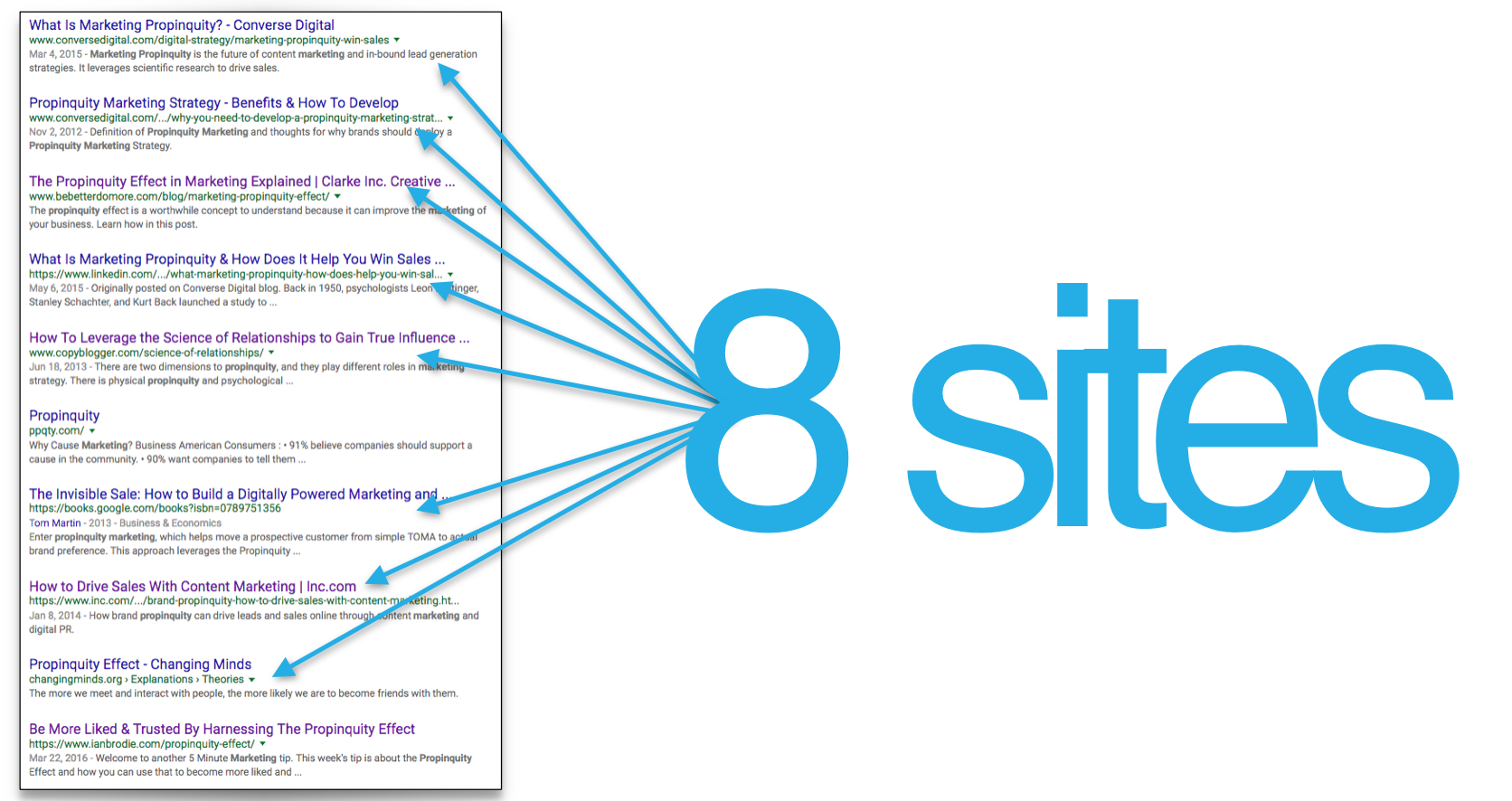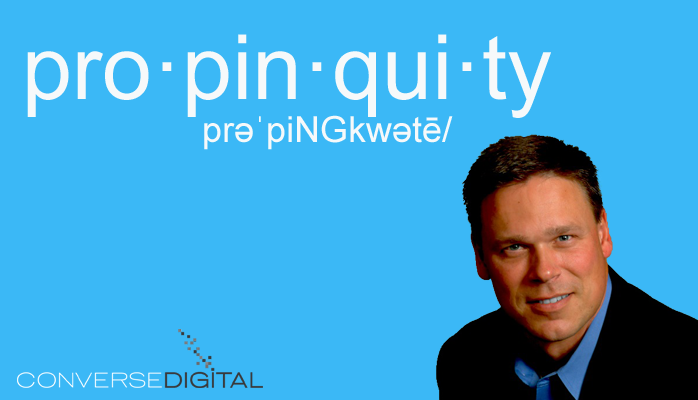propinquity
-defined-
The law of propinquity states that the greater the physical (or psychological) proximity is between people, the greater the chance that they will form friendships or romantic relationships.
How does Propinquity Work?
The theory was first crafted by psychologists Leon Festinger, Stanley Schachter, and Kurt Back in what came to be called the Westgate studies conducted at MIT. The study investigated how friendships developed among students at the new Westgate Complex at MIT. The results clearly showed the role of proximity in the formation of friendships. The strongest friendships developed between students who lived next to each other on the same floor. Where friendships developed between students who lived on different floors, one of those students tended to live near the stairways.
In non-scientific terms, the Westgate Studies found that the ability to frequently “bump into each other” [my terms] led to the formation of friendships. Numerous other studies confirm the Propinquity Effect. One of the more intriguing ones was conducted in Philadelphia. James Brossard used the addresses found on 5,000 consecutive Philadelphia marriage licenses to determine whether proximity had a role in marriage partner selection. Brossard found that 16% of the couples lived within one block of one another. Thirty-three percent lived within 5 blocks of each other, and 52% lived within 20 blocks of one another. (Note: The numbers do not add to 100 because of rounding.) In a later study in Columbus, Ohio, researchers found that 50% of married couples lived within 1 mile of each other at the time of their first date.
From these studies, we’ve hypothesized that brand/buyer relationships form the same way creating marketing propinquity. Similar to the other forms of propinquity, marketing propinquity results from increased interactions between a prospective customer and a brand or company that sells products or services that solve a problem for that prospective customer. In other words, the prospect “bumps into” the brand or company.
Let’s think about propinquity from a physical interaction point of view. If you consider all prospect interactions as physical (even those that occur online), we can agree that physical interaction is simply a point in time when your marketing efforts, products or services, or salespeople come into direct contact with a prospective customer.
For instance, when a prospect reads an article about your product in a magazine or consumes an advertisement in another magazine, those two intersections are considered physical bumps. Likewise, when a salesperson meets a prospect at a conference or a prospect visits the trade show booth, a bump occurs. And now the Internet enables virtual bumps in the form of social media posts, blog posts, emails received, etc.
We could go through all the ways your marketing message can bump into a prospect, but you’ve probably got the point now. Each of these bumps is equal to a propinquity point, a place or channel where a prospective buyer is exposed to your company and is given the opportunity to learn something new about you.
And it’s this “learn something new about you” point that moves propinquity beyond the simpler marketing concept of message frequency favored by advertising folks. The Law of Propinquity states that you can’t move a prospective buyer through the Propinquity Pathway unless they learn something new about you at each bump.
The Propinquity Pathway
Awareness >> Knowing >> Liking >> Buying
Because advertising tends to just pick a few key messages and then hammer them home via frequency maximization, the prospective buyer simply receives the same message repeatedly. Each bump doesn’t do anything to help them learn more about you, your brand or your product. Therefore, the likelihood that they move to the next level of the Propinquity Pathway is unlikely.
Conversely, a prospective buyer that bumps into your brand via advertising, news articles, e-marketing, social media posts, etc., has the opportunity to learn something new about your brand at each bump. Thus creating a larger data set of “knowns,” which then mathematically creates higher odds of finding enough knowns to decide to move from Knowing to Liking you. From there, it’s just a matter of being top-of-mind-preference when the prospective buyer is in the need of your product or service.
Want to learn more about propinquity marketing? Drop us a line using the form below and we’ll be in touch.
Ready to create a little Propinquity?
Take that first step and create awareness by filling out the form.




